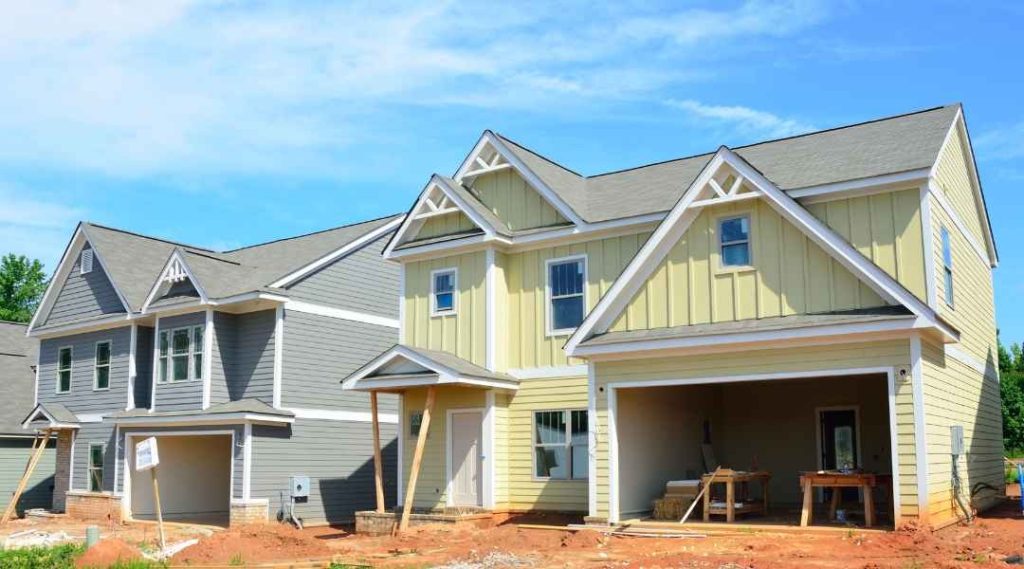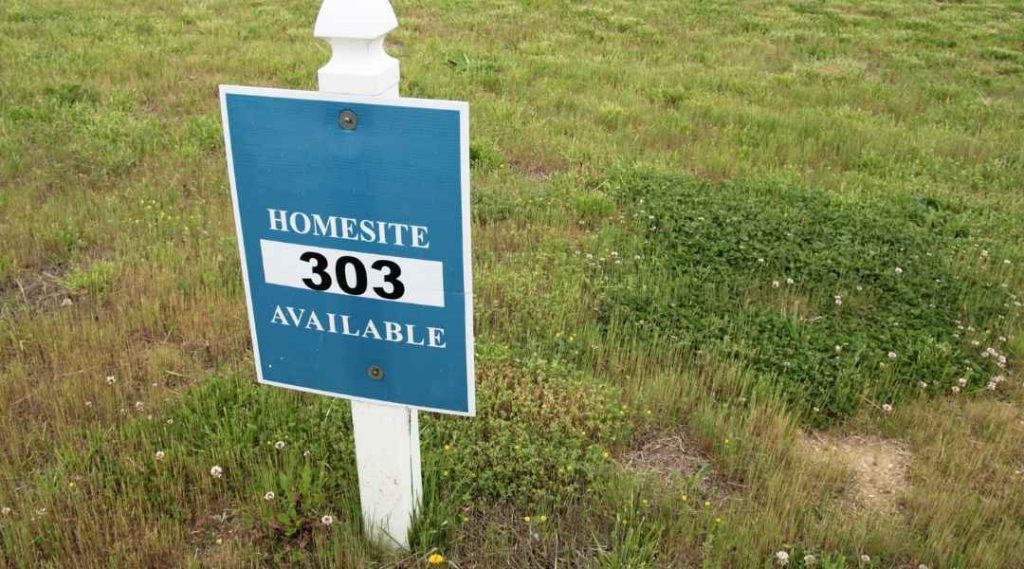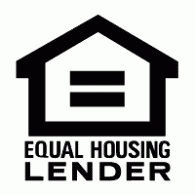- 15051 North Kierland Boulevard #341 Industrious Bldg 3rd Floor, Scottsdale, AZ 85254
- Mon - Fri: 8:30am - 6:00pm
At Blake Mortgage, we are proud to say that we are leading the way in Arizona construction loans by providing our clients with flexible options. We are leading construction loan lenders in Arizona who want our clients to worry as little as possible about the financing aspects of their home as it is being built.
Congratulations on the decision to design and build the perfect custom home for your needs and lifestyle! At Blake Mortgage, we always recommend getting credit pre-qualified first for construction loan in Phoenix, AZ. The prequalification process for Arizona residential construction loan is simple, yet it will give you a compass to work with. It lets you know how much of a loan you qualify for based on your credit, collateral, and capacity. In addition, your pre-approval will give you a good idea of your budget and lay the foundation for all your next steps.
Building or renovating a custom home is an exciting but sometimes challenging experience. However, with some patience, understanding, and a lot of organization, it can be a worthwhile undertaking that provides you with the unique features of a home you desire.
At Blake Mortgage, along with our lending partners for residential construction loans in Arizona, we have decades of experience walking clients through the financial aspects of home construction and remodeling. By working with your Architect, General Contractor, Site Inspector, Title company, and the local municipality, we play a crucial role in seeing your project through not only by providing the financing but by vetting contractors by examining their finances and insurance bonding requirements. This allows you to focus on other aspects of building your dream home or completing your renovation project.
There is a two-step process with most custom construction loans in Phoenix, AZ, which are “Interest Only” loans. First: the construction loan, and upon completion of the construction phase, second is the “Permanent” loan, which is usually a 30-year amortized loan with principal and interest payments.
One advantage of our residential construction loan in Arizona is that you not only secure the funding for the construction of your dream home, which usually comes in six or seven phases, from foundation to framing to plumbing, electrical, drywall, flooring, and roofing, but once the construction phase is complete, the loan converts into a 30 year amortized mortgage. In addition, having a Single Close construction loan in Phoenix, AZ saves money because you only have to pay closing costs once, at the beginning phase of the construction. There are only one application and one closing for the construction loan and the permanent mortgage.
Residential construction loans in Arizona usually take 12 to 18 months, depending on the complexity of the project and the speed at which different phases of the construction are met. Another advantage of our ‘Single Close’ is to hedge this for 12 to 18 months. You could lock your loan now and enjoy the lower rates prevalent today for the life of your loan, including the 30 years amortized permanent loan.

Our All-In-One Custom Construction Loan in Arizona takes a load off the client by letting them know their rates will not change during construction. The All-In-One Construction Loan in Phoenix, AZ or ‘Single Close’ simplifies the process and gets you to building and living in the home of your dreams.
It is these advantages that we offer that continue to help us grow into one of the top mortgage loan providers in the Phoenix-Scottsdale Metro Area. Please contact us to learn more about residential construction loan financing in Pheonix, AZ and how we can streamline the process from start to finish.
Building a Custom Home with Blake Mortgage | Residential Construction Loan Lenders in Arizona

Building custom can be a fun and exciting experience. However, it can also seem daunting and overly complicated. Why? You’re starting from scratch. You pick the lot, the builder, the plan, the materials. That’s many choices and many “i’s” that need to be dotted and “t’s” crossed. Don’t worry; we’re here to help. That’s why we say Blake Mortgage is “invested here.”
We’ve done our best to map out the custom construction process. but remember that everyone’s situation is slightly different.
Make your wish list.
There are things about your current home you would want to change if you could. The first thing to do is to list the features you’d desire in an ideal home. What daily frustrations do you encounter in your current house? Make a list of features or issues, and don’t hold back.
Involve everyone that lives in your home or visits you regularly. There are no bad ideas at this stage, so write down all suggestions.
Here are a few standard features you might find inspirational as you put your list together:
Do you want to be close to your siblings or aging parents? How often do you see your extended family? Would you like your custom home to be the family gathering spot? Kid-friendly neighborhoods? Review the schools, parks, and safety statistics of the communities you’re considering. A quiet location? A cul-de-sac? Or the sidewalks in an urban setting? Do you want a fenced back yard? Or open acreage so the kids or grandkids can explore?
Do you value a unique design for your home? Or are you looking for a traditional design? Think about adding detailed molding or other exterior add-ons to create your home’s one-of-a-kind look. Amount of storage
Does your current home feel cramped? Do you have particular hobbies that require storage or workspace? Consider adding closets, casework, or even extra storage space in your new home’s garage and attic.
Space for entertaining. If your current kitchen doesn’t provide you the space you need, consider adding a more oversized kitchen to your wish list.
Take time to set priorities.
While it’s fun to imagine the perfect home with every feature you can dream up, real-life involves compromise. We know some things are just more important than others. Think about what will make the most impact on your family’s quality of life. These are your primary features. Other things may be nice to have but won’t significantly impact your quality of life. These become lower priorities. Again, making a simple list is one of the best ways to organize your thoughts. Try to rank order the items in each column because you likely will need to trim here and there.
Prioritize a wish list:
Primary Needs
Secondary Needs
Determine a rough budget.
At this stage, you aren’t going to have a firm idea of what everything will cost. However, it is
essential to get a general idea of what you are willing and able to spend on your new home. Answer these questions:
Getting your loan officer involved early may prove to be one of the best things you can do to solidify your budget.
At Blake Mortgage, we specialize in Partnership with a local bank in custom residential construction loan financing in Phoenix, AZ and guide you before you start drawing up plans, so you know precisely what your budget is and what you can afford.
Construction Loain in Arizona | The Fun Part. Choose Your Homesite.
“Location, location, location.” We’ve heard it time and time again. Would you prefer more privacy or even acreage? Do you have children? If so, the quality of the neighborhood amenities like parks and schools will also affect your decision. In general, the closer you get to cities, the more expensive the land becomes. If possible, try to find a lot that meets your immediate needs and has the potential to increase in value over time.
Geography will be another factor in your decision. Living in the hills or on a bluff may appeal to you, but you will pay for that view. If the land is incredibly steep, you may incur additional costs in the planning or constructing your home to hire engineers. You may also want to build near water or other recreation, which will impact your costs. And consider how you will commute to work and whether transportation alternatives are available.

If you need to purchase a plot of land, you may want to consider a Lot loan. Once you own the lot, you can take your time to hire an architect, firm up plans, and get building permits. When you’re ready to build, you can often migrate the lot loan balance to a custom construction loan. When you’re developing a custom home plan, don’t just think about how good things will look, but how you will use them.
Do you want your bedroom on the main floor? How easy is it to get from the kitchen to the dining room? Will you usually be entering the house through the front door, the garage, or a side door? Where does your family typically gather in the evenings? How often do you entertain? Do you need space for play, office space, or hobby space? These are the kinds of questions you should be talking through with your architect or home designer. Make sure you’re designing a house that functions the way you want it.
Of course, part of the fun of building is aesthetics. Starting now, look through home design magazines and websites to get ideas and familiarize yourself with popular styles. Colonial, Cape Cod, Ranch, Cottage, and Craftsman are just a few of today’s most popular home styles. The type will impact your budget. In general, the more angles a home has, the more expensive it will be to build. Homes that are closer to the shape of a rectangle require fewer materials and lower labor costs. Intricate moldings, special features, and extra trim add to the price.
Organize ideas in a binder along with your wish list and budget, and bring these with you when you meet with your architect or home designer. Be sure to hire reputable experts.
Good builders, architects, and general contractors will prove invaluable when building a custom home. If you are new to the custom construction process, hiring a well-respected expert is well worth the extra money. Depending on their skill set, they can help you determine your budget, draw up your plans, make informed design decisions, and oversee construction.
Ensure the experts you’re hiring have all the specialized skills and experience your project will require. Ask lots of questions, get references, and verify that they have all the necessary licenses,
designations, and insurance as directed by your state. One of the best places to start is to ask your residential construction loan lender in Arizona for a list of builders in your area.
Depending on the project and the experts you choose, there may be some overlap between titles and job responsibilities. In some cases, you may find one company that has its experts and can handle everything. In other instances, you may want to hire each of them yourself to pick your team members.
The architect will draw the plans and work with the client to understand any design features the client wants to include. With this knowledge, they develop all of the structural, mechanical, and electrical specs. They will also help oversee the process by getting frequent updates from the builder or general contractor. They will often help you get your construction permits by submitting your plans to the city for approval. In most cases, architects get paid by the client based on the total project budget.
Builders are responsible for coordinating and building your home. Some builders may ultimately design custom homes using in-house architects or designers. In contrast, others may work with architects hired by their clients. Builders will often have their in-house teams that handle most construction aspects without as much need to subcontract. In most cases, you will work with your architect and builders to determine your home’s costs. The fees you pay to the builder will cover these costs, including materials and subcontractors, plus any fees the builder charges for their services.
Your general contractor will be involved in all the day-to-day management during the construction process. A general contractor will hire all the subcontractors needed for your job. They get paid by charging a percentage on top of the subcontractors’ total fees in most cases.
Interior designers are multi-talented, artistic professionals responsible for designing and coordinating the use of interior space. It includes everything from layout and furnishings to paint and carpet, cabinets, colors, etc.
Some interior designers are self-employed, while others work for design firms or retail stores. Self-employed designers charge by the hour, by the project, by the square foot, or based on materials’ cost. Designers working for design firms or retail stores are usually paid yearly salaries or by the hour.
Soil engineers are responsible for inspecting and analyzing a site’s soil and geotechnical characteristics. Through observation and testing, they can determine things like drainage, erosion patterns, and weight-bearing capacity. This will help determine whether any special accommodation needs to be made for the foundation or other aspects of the home.
Soil engineers can charge hourly for their services, including the time they are drilling or inspecting a property but may charge flat fees for testing or writing reports.
Typical construction financing takes two steps.
Many banks that offer construction financing do so in two steps. The first loan covers construction only. After construction, you close on a second, permanent mortgage loan. So, you’ll face two closings and two sets of fees. You also need to plan for fluctuations in interest rates during the 9 – 12-month construction phase. Mortgage rates may increase, putting pressure on your ability to afford your payments once your home is complete.
Blake Mortgage specializes in construction financing In Partnership with a local bank. Building a custom home may be one of the most significant financial decisions you will ever make. If you choose Blake Mortgage for your home loan needs, you will have a dedicated manager who will meet with you one-on-one and face-to-face. The same person will handle your loan from start to finish.
Consider our “all-in-one” or “Single Close” construction loan in Phoenix, AZ.
Unlike many other lenders, Blake Mortgage offers an All-in-One Custom Construction loan in Arizona. There is only one application with our all-in-one loan, one closing, and one set of fees. You will not have to get a loan for the home’s construction, only to have to come back and get a second loan after the house is complete. The entire project is underwritten at the same time.
When you build a custom home, we allow 12 months for interest-only payments on the funds you have drawn to date as your home is being built. Upon completion, we roll your loan into a fully amortized loan with principal and interest payments spread over 30 years. We also offer a 15-year term option. Construction of your home will be paid for by doing monthly draws from your total loan amount based on completion percentage.
Custom Construction Financing | Arizona Construction Loan Lenders
Custom construction financing is a bit more complicated than a standard mortgage. Here’s a list of the items that we require at Blake Mortgage.
Complete sets of architectural plans, including a plot/site plan (signed/dated by builder and borrower), copies of the description of materials and specifications (signed/dated), copies of the cost estimate (signed/dated), Acknowledgment of any pre-paid construction costs, along with copies of receipts (signed by builder and borrower):
Documents required before loan closing:
All these items can still be overwhelming. If you bring your lender into the mix as early as possible. He or she can help to make sure you have everything you need.
Be sure to get your construction loan lender in Arizona to approve your builder. It’s going to be your custom home, but if you’re borrowing the money to build it, remember that the bank will be the lien holder. That’s why your residential construction loan lender in Arizona will need to approve the builder you hire.
So, while you are gathering everything you need to complete your loan application, your builder will also have to do some legwork. Blake Mortgage requires a completed Builder Package to evaluate your builder’s experience level and financial condition.
Your construction loan lender in Arizona can help guide your builder through the application process.
An appraisal to determine the house’s exact value is needed. Once you have your plans drawn by the architect, the appraiser will base the value of the completed project on the plan drawings in the course of the items that will go into the construction of the home.
Once the construction is completed, the appraiser will do a final inspection to determine the final value. The total loan amount is then finalized. The appraisal value is key to determining the final loan amount. The bank won’t lend more than a certain percentage of the home’s completed value, usually up to 80% of the appraised value or actual construction cost, whichever is less.
Here is the information your lender will need to order a professional third-party appraisal based on your house plans:
While you wait for the appraisal, you will need to obtain permits, licenses, and special construction insurance. Here are a few commonly required documents:
The local city or county must issue this document allowing you to build on the property. They will require your building plans when you file for a permit.
Once your appraisal is complete, and you’ve gathered the rest of the necessary documents, your loan is ready to be reviewed by the bank’s underwriter. After you receive final approval from your construction loan lender in Phoenix, AZ, you will need your building permit before you’re ready to close on the loan. During the closing, you and your lender will meet so you can sign documents, pay closing costs as well as your down payment, and schedule construction ground-breaking. Keep in mind; you will need to be prepared to cover individual construction costs in the beginning until you qualify for your first draw payment.
During the construction process, you make payments based on the amount you’ve drawn against your loan, not the whole loan amount. As we mentioned earlier, construction is funded through monthly draws.
Your monthly draws will be based on the completion percentage. For example, say that your local Blake Mortgage branch manager confirms that half of the home’s windows are now installed after a site inspection. You are then allowed to draw 50% of the “window” line item in your construction budgets. Note that draws are only permitted for work completed and fixtures that are already “attached” to the house. So, if you order unique windows and the manufacturer requires a deposit, those funds will need to be paid up-front out of your pocket. Your construction loan lender in Phoenix, AZ would then reimburse you once the windows are installed.
Plan to communicate daily with your contractor throughout the construction process to ensure that you stay on schedule. Keep your lender informed of any issues or delays that impact your
budget or project timing. While it is their job to help you build your home on time and within budget, it is ultimately your responsibility as the borrower. If construction falls behind or you make changes mid-stream, you may find yourself out of money or cutoff from borrowing more until you set things straight.
Once your new home passes inspection, you will receive your occupancy permit. You can move in. your “All-in-One” construction loan in Phoenix, AZ will convert at this time to permanent financing. You will begin to make your standard amortizing mortgage payments to Blake Mortgage. If you’ve chosen a two-step process, then you’ll need to arrange for a permanent mortgage before you can move in and occupy the home.
As you begin your journey, we hope that you have found this booklet to be of value.
We’ve been helping customers afford the home of their dreams for many years and we love what we do.
Company NMLS: 150459
MLO #175138
www.namb.org


© Copyright 2024 Blake Mortgage. All rights reserved.